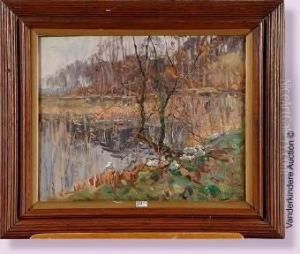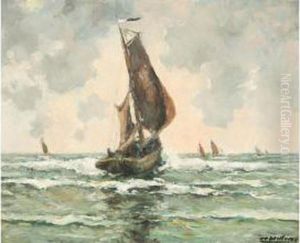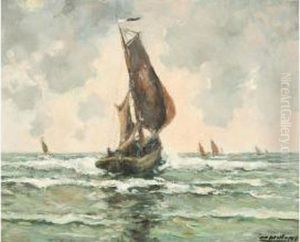Jozef Willems Paintings
Jozef Willems was a Belgian artist known for his work in various mediums, including painting, printmaking, and drawing. Born on September 9, 1889, in Antwerp, Belgium, he grew up in a period marked by significant artistic change, with movements such as Impressionism giving way to Modernist approaches. While less known internationally than some of his contemporaries, Willems contributed to the Belgian art scene with a distinctive style that often reflected elements of Expressionism and Symbolism.
Willems received his artistic training at the Royal Academy of Fine Arts in Antwerp, where he was influenced by the teachings of prominent Belgian artists of the time. He was particularly interested in exploring the emotional and psychological dimensions of his subjects, which led to a body of work characterized by intense color, dramatic lighting, and expressive brushwork. Throughout his career, Willems exhibited his work in various galleries and shows, gaining recognition among Belgian art circles.
During World War I, Willems served in the military, and his experiences during the war would later influence his art, infusing it with themes of human suffering and resilience. After the war, he returned to his artistic pursuits with renewed vigor and a deeper sense of purpose. He continued to explore different techniques and subjects, including landscapes, portraits, and scenes of daily life, all imbued with his personal artistic vision.
Willems's work was also marked by his interest in the social issues of his time. He often depicted the lives of the working class and the rural poor, bringing attention to their struggles and dignity. This social consciousness added a layer of depth to his already emotionally resonant pieces. Despite the regional focus of his subjects, his work resonated with broader humanistic themes, making it relevant to a wider audience.
Jozef Willems maintained an active artistic life until his later years. His contributions to Belgian art were recognized through various awards and honors. He passed away on November 24, 1972, leaving behind a legacy that, while perhaps not as well-known as that of some of his peers, remains an important part of Belgium's artistic heritage. His works are now part of several collections and continue to be appreciated for their emotional depth and technical skill.


